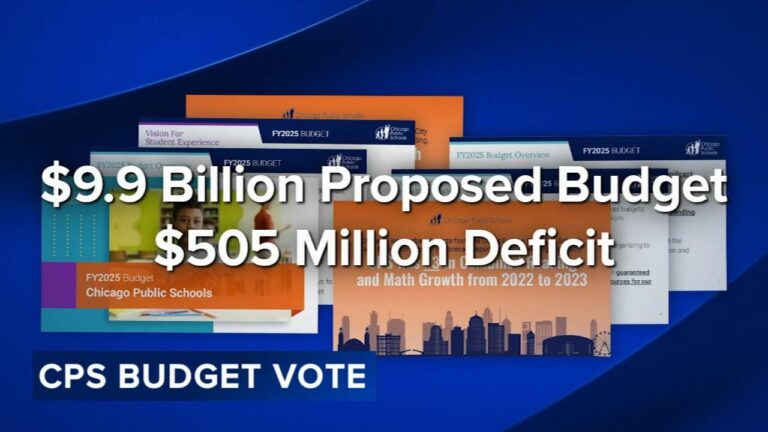Chicago Public Schools Achieve Financial Stability with Newly Approved Balanced Budget
The Chicago Board of Education has successfully ratified a balanced budget for Chicago Public Schools (CPS), effectively bridging a substantial $730 million deficit. This pivotal decision aims to secure the district’s financial footing while safeguarding vital educational programs and services. Amid rising operational costs and unpredictable funding streams, the budget prioritizes resource allocation that supports both students and educators throughout the city’s largest school system.
Comprehensive Financial Plan Tackles $730 Million Deficit
In a strategic effort to resolve the significant funding gap, the Board of Education endorsed a budget that balances fiscal prudence with sustained investment in classroom essentials. The plan incorporates a combination of cost-saving measures, efficiency enhancements, and selective reductions in non-critical areas to preserve the quality of education and support services district-wide.
Key components of the budget include:
- Reducing administrative overhead through streamlined processes without undermining operational effectiveness.
- Allocating funds preferentially to critical classroom resources such as updated technology and special education programs.
- Strengthening collaborations with community organizations to enhance educational offerings and foster engagement.
| Budget Segment | 2024 Allocation | Year-over-Year Change |
|---|---|---|
| Instruction & Classroom Support | $2.2 billion | +4% |
| Administrative Costs | $320 million | -9% |
| Facilities & Maintenance | $400 million | Stable |
| Student Services & Programs | $610 million | +1.5% |
Innovative Approaches to Closing the Budget Gap
To address the daunting $730 million shortfall, CPS adopted a multifaceted strategy blending fiscal discipline with innovative funding tactics. Central to this approach was enhancing operational efficiency and optimizing administrative spending without sacrificing classroom quality. The district also renegotiated vendor contracts and trimmed discretionary expenses to maintain essential services while reducing overhead.
Furthermore, CPS sought to boost revenue by tapping into state and federal grants and forging new partnerships with private entities. Notable initiatives include:
- Targeted grant pursuits to fund technology advancements and under-resourced programs.
- Public-private collaborations to enrich extracurricular activities and improve school infrastructure.
- Revised funding formulas that allocate resources more equitably based on student demographics and needs.
| Initiative | Focus Area | Projected Outcome |
|---|---|---|
| Operational Streamlining | Management & Overhead | 15% reduction in expenses |
| Grant Acquisition | Technology & Innovation | $130 million additional funding secured |
| Community Partnerships | Extracurricular & Facilities | Expanded program offerings |
Effects on Educational Resources and Student Programs
The approved budget brings immediate shifts in classroom resources, emphasizing essential supplies and digital learning tools. Teachers report increased access to devices such as tablets and interactive smartboards, which are expected to enhance instructional methods and student engagement. However,funding cuts have impacted non-core materials,including art and music supplies,potentially limiting creative opportunities in some schools.
Student programs have been realigned to focus on initiatives that directly influence academic achievement and college preparedness.While programs like Advanced Placement (AP) courses have seen budget increases, some enrichment activities, including after-school clubs and summer camps, face reductions or restructuring to optimize resource use.
| Program | Budget Adjustment | Resulting Impact |
|---|---|---|
| Advanced Placement (AP) Courses | +18% | Broader course availability |
| After-School Clubs | -22% | Fewer sessions offered |
| Summer Enrichment Camps | -30% | Consolidated programs in select locations |
| Special Education Services | Maintained | Consistent support levels |
Expert Insights on Ensuring Long-Term Fiscal Health for CPS
Financial experts emphasize that sustaining CPS’s fiscal stability requires ongoing disciplined budgeting paired with strategic investments in personnel and infrastructure. Transparency in expenditures and continuous financial forecasting are critical to preventing future deficits. Collaboration with municipal leaders and community stakeholders is also vital to uncover innovative funding avenues while upholding educational standards.
Recommended strategies include:
- Developing multi-year financial plans with clear goals and contingency protocols.
- Utilizing advanced data analytics to guide precise budget decisions.
- Implementing cost-saving technologies to improve operational efficiency.
- Ensuring competitive and lasting compensation packages to attract and retain top educators.
| Strategy | Expected Benefit | Implementation Timeline |
|---|---|---|
| Multi-year Budgeting | Financial stability and predictability | 1-3 years |
| Data-Driven Decision Making | Enhanced budget accuracy | 6-12 months |
| Technology Integration | Lower operational costs | 1-2 years |
| Compensation Strategy | Improved staff retention | Ongoing |
Looking Ahead: Navigating Financial Challenges with a Focus on Student Success
The Board of Education’s approval of a balanced budget represents a crucial advancement for Chicago Public Schools as it confronts ongoing fiscal pressures. By addressing the $730 million deficit through strategic reallocations and efficiency measures, CPS aims to stabilize its financial outlook while continuing to prioritize educational excellence. The coming months will reveal how these budgetary decisions influence schools and communities across Chicago, with stakeholders closely monitoring outcomes to ensure sustained progress.








